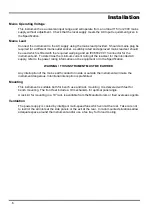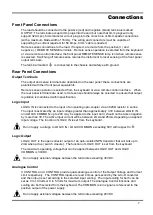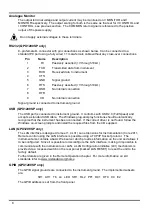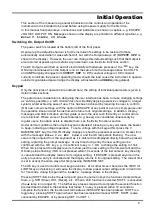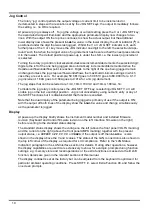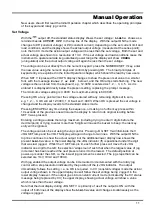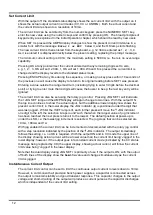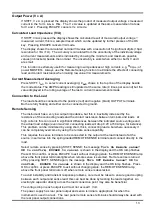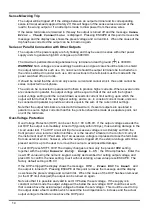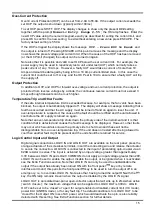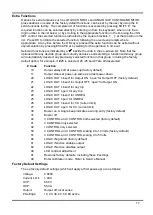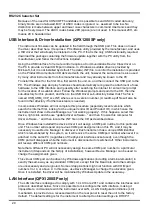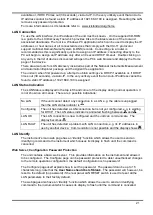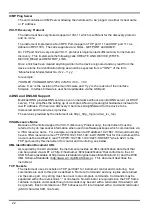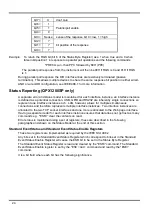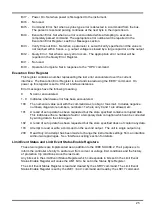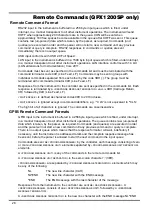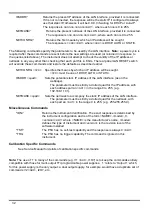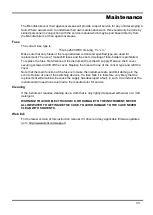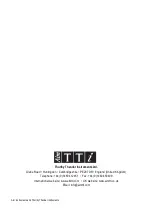
20
RS232 Character Set
Because of the need for XON/XOFF handshake it is possible to send ASCII coded data only;
binary blocks are not allowed. Bit 7 of ASCII codes is ignored, i.e. assumed to be low. No
distinction is made between upper and lower case characters in command mnemonics and they
may be freely mixed. The ASCII codes below 20H (space) are not used. In this manual 20H, etc.
means 20 in hexadecimal.
USB Interface & Driver Installation (QPX1200SP only)
The instrument firmware can be updated in the field through the USB port. This does not need
the driver described here. It requires a PC software utility provided by the manufacturer, and uses
a HID driver that will already be installed on the PC. If that is the only USB functionality required,
download the package containing the firmware update together with the PC utility from the
manufacturer, and follow the instructions included.
Using the USB interface for remote control requires a Communications Device Class driver on
the PC to provide a virtual COM port instance. In Windows a suitable driver is provided by
Microsoft, but it is not installed by default. The data (.INF) file to control the installation is provided
on the Product Documentation CD delivered with the unit; however the same driver is also used
by many other instruments from this manufacturer and may already be known to the PC.
To install the driver for the first time, first switch the unit on, and then connect the USB port to the
PC. The Windows plug and play functions should automatically recognise the attachment of new
hardware to the USB interface and (possibly after searching the internet for some time) prompt
for the location of a suitable driver. Follow the Windows prompts and point to the CD, then the
sub-directory for this product, and then to the USB Driver sub-directory below that. The file is
named USB_ARM_VCP_xxx.INF, where xxx is a version number. (A readme.pdf file will also be
found in that directory if further assistance is needed.)
In some cases Windows will not complete this procedure (especially recent versions which
search the internet first, looking for the unique Vendor ID and Product ID), in which case the
instrument will show in Device Manager as “not working properly”. If this happens, select this
device, right click and choose “update driver software...” and then “browse this computer for
driver software...” and then locate the .INF file on the CD as described above.
Once Windows has installed the device driver it will assign a COM port number to this particular
unit. This number will depend on previous COM port assignments on this PC, and it may be
necessary to use Device Manager to discover it. Each instrument has a unique USB identifier
which is remembered by the system, so it will receive the same COM port number whenever it is
attached to the same PC (regardless of the physical interface socket used), even though the
COM port will disappear while the instrument is disconnected or switched off. Other instruments
will receive different COM port numbers.
Note that a different PC will not necessarily assign the same COM port number to a particular
instrument (it depends on the history of installations), however Device Manager can be used to
change the assignments given.
This virtual COM port can be driven by Windows applications (including a terminal emulator) in
exactly the same way as any standard COM port, except that the Baud rate and other settings
are unnecessary and are ignored. Some old applications might not function with COM port
numbers 3 or 4, or above 9. In this case, use Device Manager to change the allocation given.
Once it is installed, the driver will be maintained by Windows Update in the usual way.
LAN Interface (QPX1200SP only)
The LAN interface is designed to comply with 1.4 LXI Core 2011 and contains the interfaces and
protocols described below. Since it is possible to misconfigure the LAN interface, making it
impossible to communicate with the instrument over LAN, a LAN Configuration Initialise (LCI)
mechanism is provided via a recessed switch on the rear panel to reset the unit to the factory
default. The default setting is for the instrument to attempt to obtain settings via DHCP if

